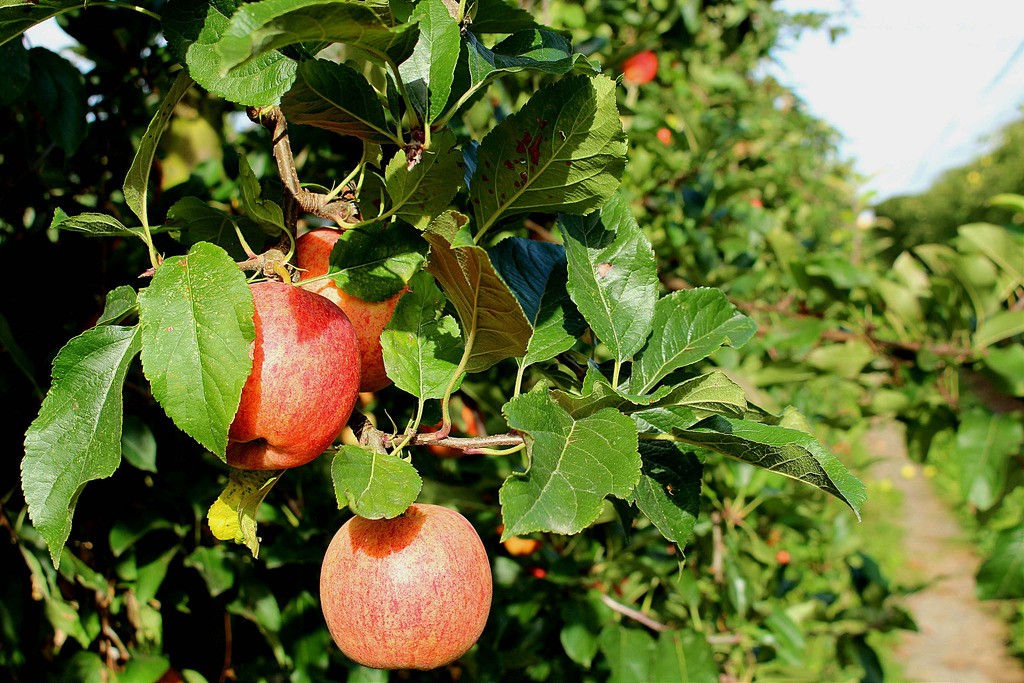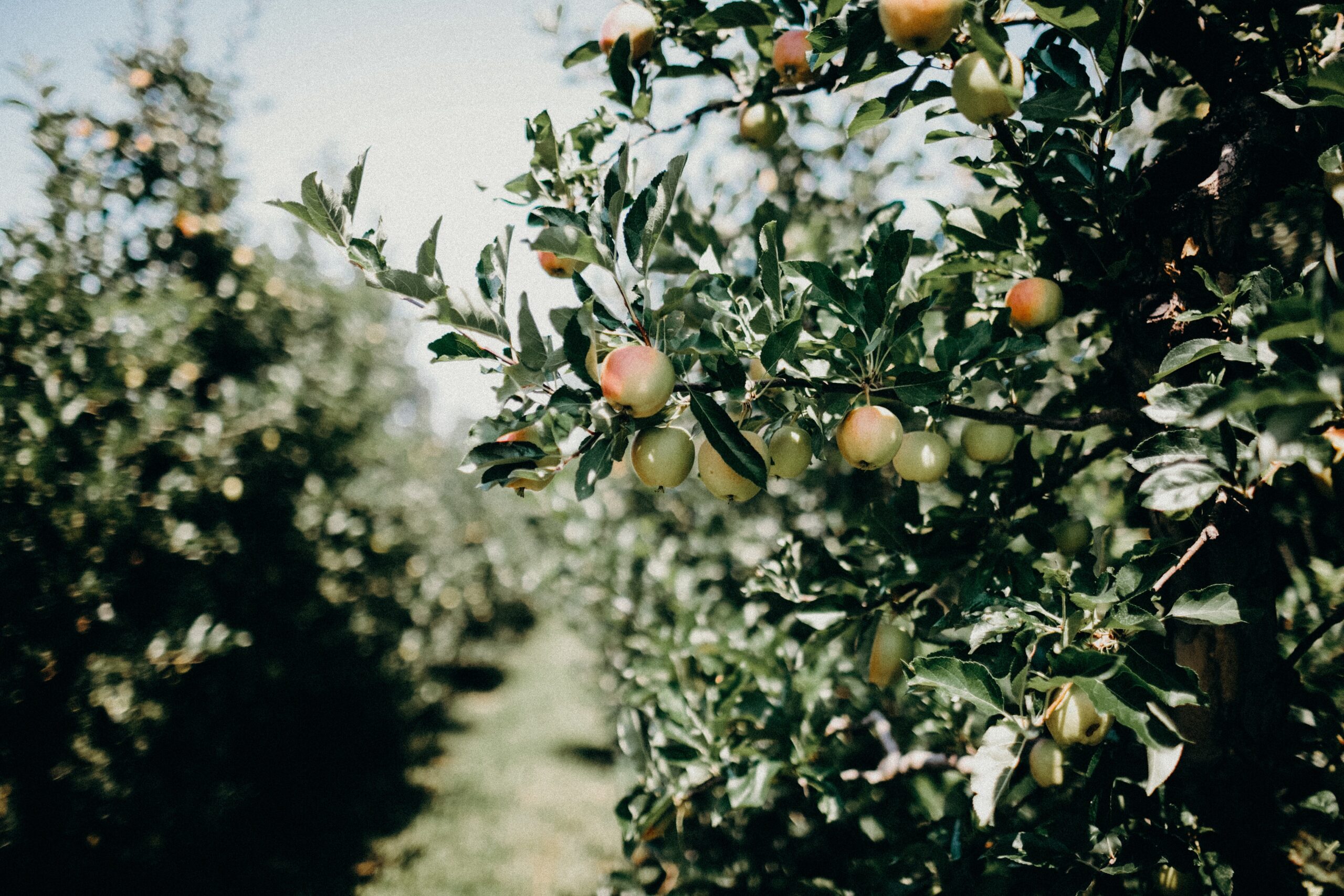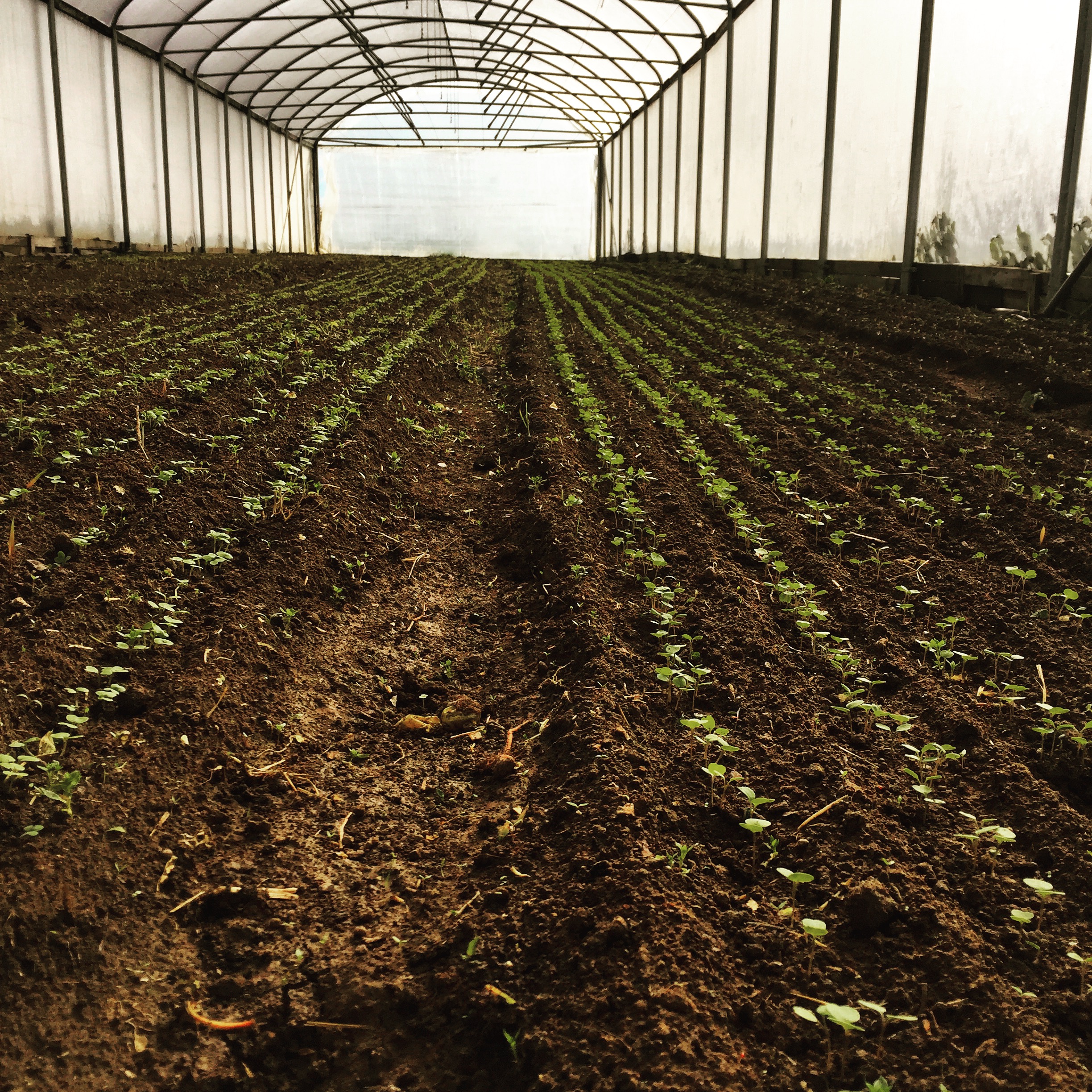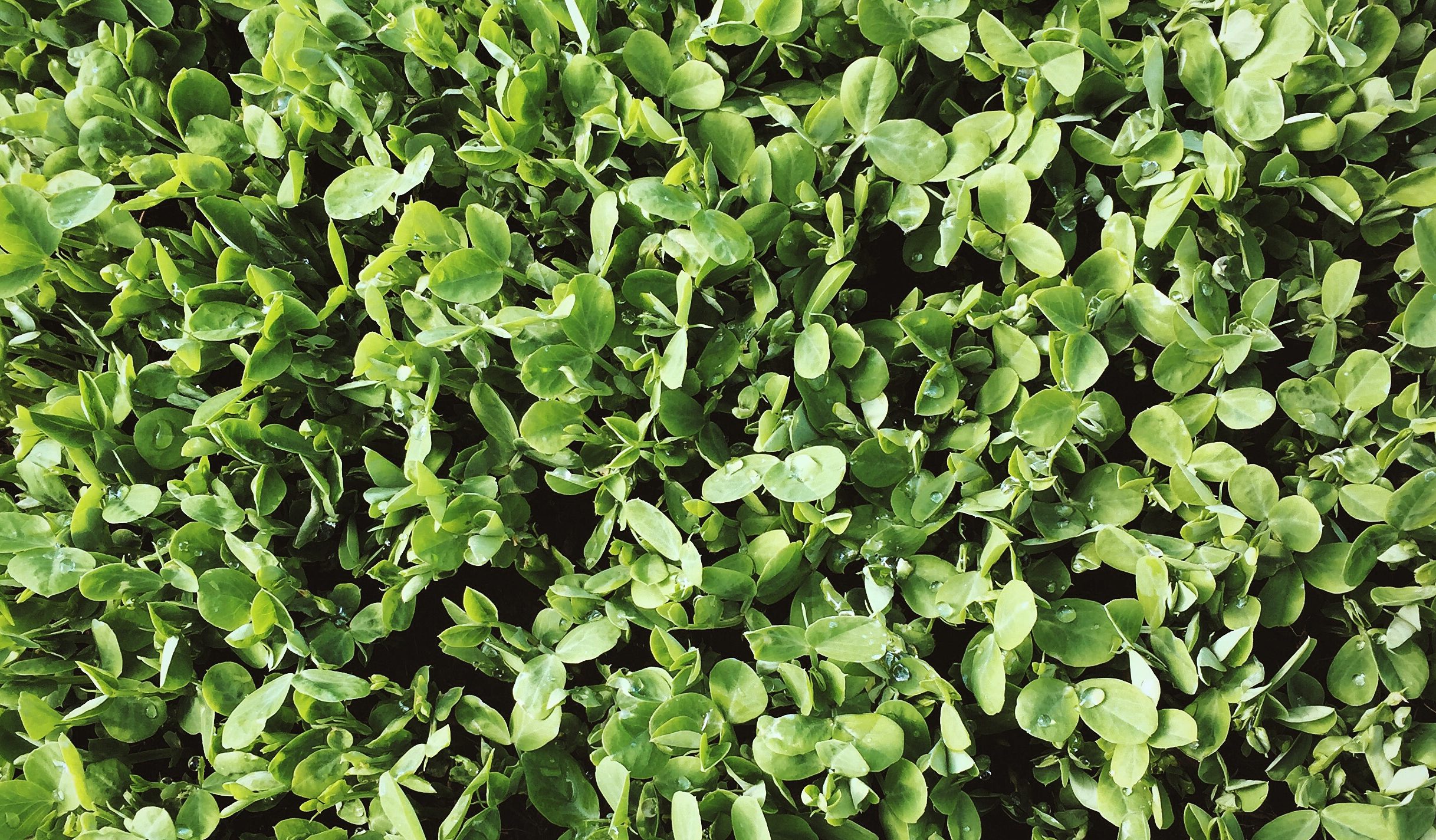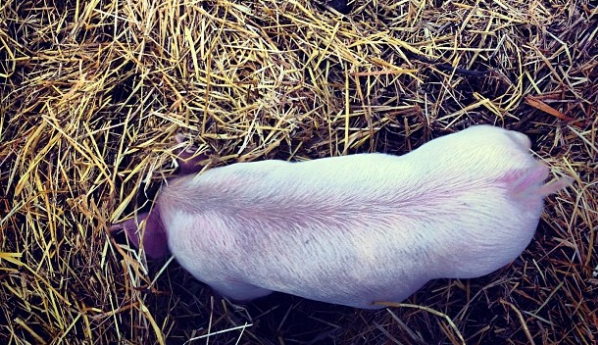

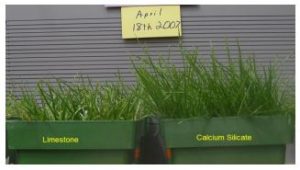
Photos from Rutgers of crops raised with calcium silicate vs calcium carbonate. Note the powdery mildew on the vine raised with calcium carbonate.
Silicon. It probably doesn’t show up on your soil analysis, and maybe you don’t look for silicon-heavy amendments when doing your annual fertilizer shopping. But when silicon has been leached from the soil and is not replenished, plants succumb to stress—fungus, disease, pest pressure, temperature, salinity—reducing the yield, the quality of the produce, and its post-harvest longevity.
The importance of silicon does not end with the plant. As consumers of vegetables, silicon content matters in our diet. Anthony Boutard of Ayers Creek Farm reflects on silicon,
“When we moved to Gaston twelve years ago, we noticed many signs advertising “Eastern Oregon Hay.” We asked our friend Eric, a dedicated horse farmer, why hay from the eastern part of the state was such a big deal. He told us that the soil from the dry eastern side of the Cascades has higher silicon content, and the hay from the region produces stronger bones and joints in horses. … We easily accept calcium as necessary for strong bones, but few people other than horse owners appreciate the need for silicon in the diet, or the fact that it can be deficient in foods grown on certain soils.” (Beautiful Corn, p. 80)
You can top off your soil’s silicon levels with the mineral wollastonite, which we carry under the brand name VanSil. It’s approved for organic production, and shown to offer the benefits of silicon described above. Wollastonite is high in calcium silicate (spelled Ca2SiO4 or 2CaO·SiO2).
In addition to providing silicon, wollastonite works as a liming agent. It’s about 93% as effective as ag lime—so, you can use it as a substitute for some, or all, of your liming that you already apply for maintenance of our acidic soils, saving on amendment costs. VanSil is marginally more expensive than ag lime, but remember, not only does it regulate pH, it also confers a whole separate benefit: silicon.
Other amendments contain silicon as well, as we discuss further below. But none of the other options double as a liming agent, and they’re all more expensive, and only some are OMRI-listed, which is why we typically recommend wollastonite.
—
Why apply it? What levels are beneficial, deficient, excessive? Who’s worked with it?
In short, silicon helps a plant to resist all kinds of stresses. Extension research from Rutgers, an East coast land grant university, has shown that applying wollastonite instead of calcium carbonate delivers a host of statistically significant benefits, including reduction of plant diseases and fungi (including powdery mildew and leafspot), increased yield, increased post-harvest longevity, and decreased palatability to sucking pests (incl. aphids and stem borers). Other researchers (cited below) have found that silicon helps plants with metal toxicity, deficiency or excess of potassium, phosphorus, and nitrogen, low-temperature stress, and salinity levels. The short version is that silicon makes a plant more resilient to biotic and abiotic stressors in its environment, measurably improving yield and quality in the final product. This isn’t just for some commodity-scale crop like sugar beets: these results were observed in vegetables (cabbage, squash) as well as grasses (including corn), which are known to be heavy silicon accumulators.
O.K., so what are the numbers? What thresholds are deficient, or adequate?
Rutgers found that dicotyledonous plants benefit from an extra application of silicon if soil test levels are below 30 ppm; for grasses, apply if your test is below 40 ppm. (Your soil may only be 15-30 ppm in its natural state.) Consider asking your lab for a silicon analysis by acetic acid soil extraction. Read more here, from Rutgers. That report also discusses performing a foliar test to ascertain adequate silicon accumulation.
—
Who says we need it?
Silicon was deemed to be an “inessential” plant nutrient back in the 1860’s, when German soil scientists found they could grow plants in soilless solutions without any silicon. And yet, some plants will accumulate up to 10% silicon—including some of our important staple cereal crops, like corn and wheat, which accumulate more silicon in their tissues than any other element. Turns out that this is why we have customers building their peat-based soilless mixes and looking to incorporate trace amounts of silicon. (Which, in fact, is what some of the commercial blends have already done–take a close look at the labels next time you pick up a bag.)
What’s the deal, isn’t silicon already in the ground? Why add more?
Yes, silicon is found in sands (containing quartz, made of silica, SiO2), and clays (containing sheets of silica). But silica has limited solubility, and plants only uptake silicon in solution as silicic acid, H4SiO4. This is why our west Oregon soils may contain quartz, and yet prove deficient in silicon.
—
So what are the other sources of silicon, agriculturally? Other than wollastonite?
There’s potassium silicate (K2SiO3), which we carry under the brandname AgSil 16. offers a soluble source for feeding silicon and potassium. But potassium silicate is prohibited in organic agriculture. And many of us already have adequate potassium, anyway.
And there’s rock flours, like greensand. Our greensand is 58.97% silica, according to the guaranteed analysis. And it is permitted in organics. Other OMRI-listed rock flours also contain silicon (as silica), like glacial rock dust (871 ppm Si), basalt dust (995 ppm Si), diatomaceous earth (89% silica), and azomite (65% silica).
The silicon source used by Rutgers, in their studies of silicon’s use in agriculture, is calcium silicate (spelled Ca2SiO4 or 2CaO·SiO2), as we discussed above. Calcium silicate is permitted in organics, so long as you get it as the mineral wollastonite, and not from a steel mill. We carry wollastonite as VanSil, and recommend it as a source of silicon. It can conveniently be used instead of calcium carbonate for your liming this year, even just in part, while you determine whether silicon might help your soil health and crop resilience.
As always, be cautious when handling and spreading any kind of dust that contains silica, whether that’s D.E., glacial rock flour, greensand or anything else.
Further reading
Boutard, Anthony. Beautiful Corn. Gabriola Island, BC: New Society, 2012.
Liang, Yongchao, et al. Silicon in Agriculture. Heidelberg: Springer Science, 2015.
Datnoff, L.E., et al., ed. Silicon in Agriculture. Studies in Plant Science (8). Amsterdam: Elsevier, 2001.
